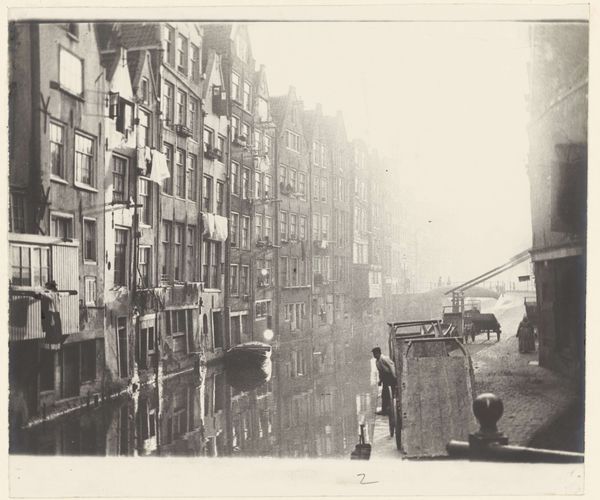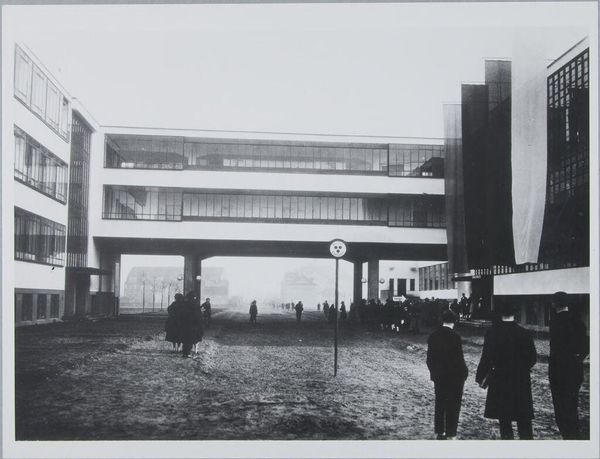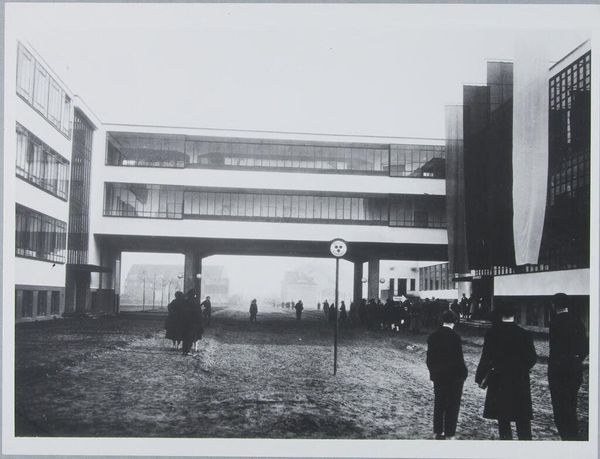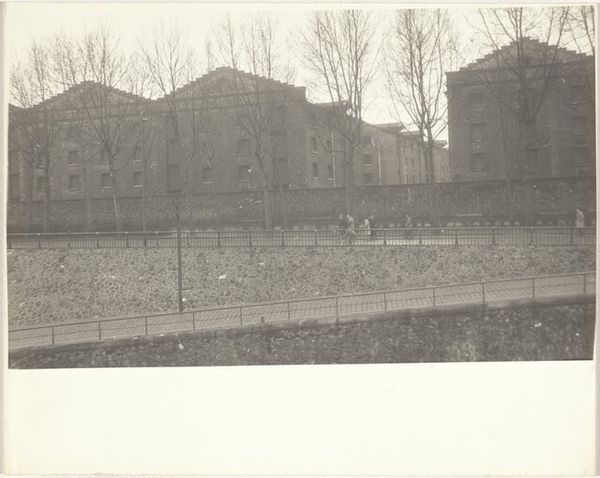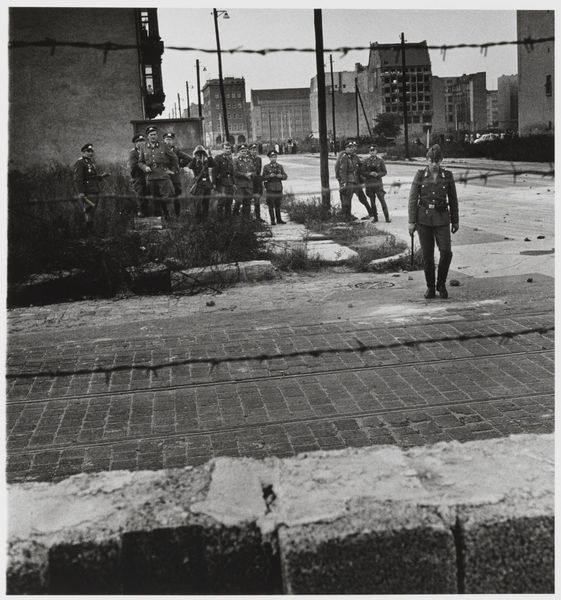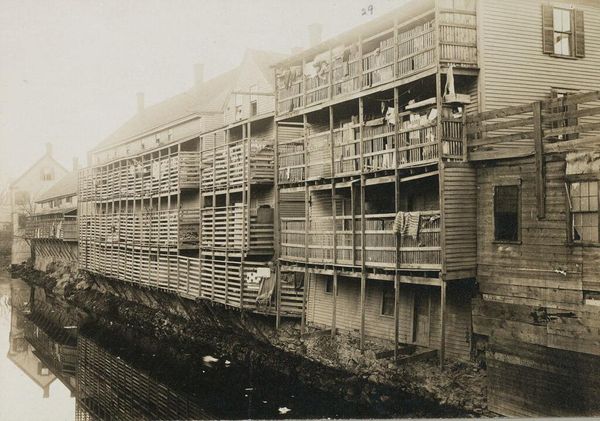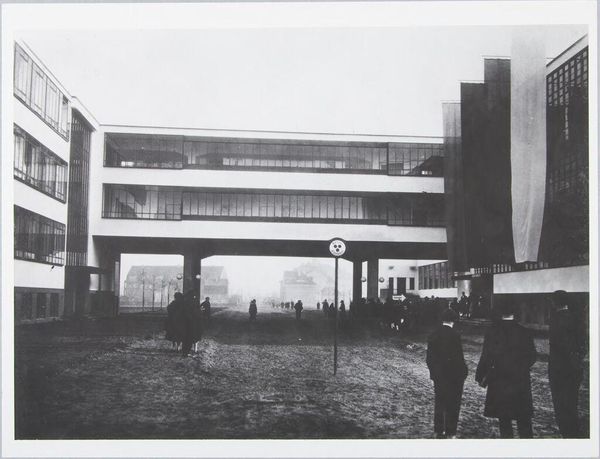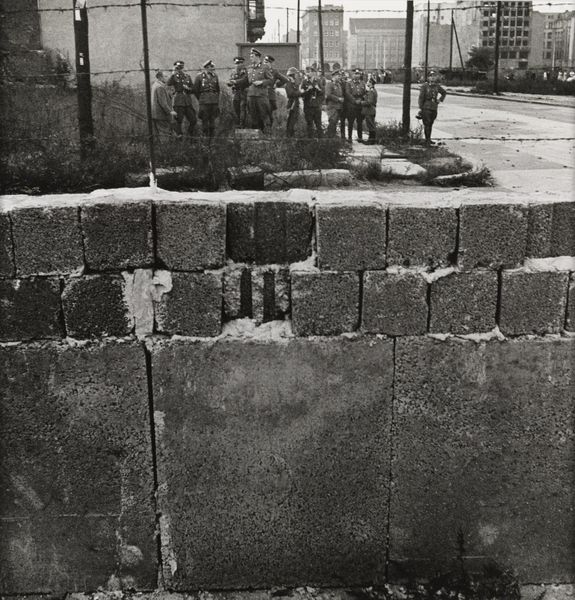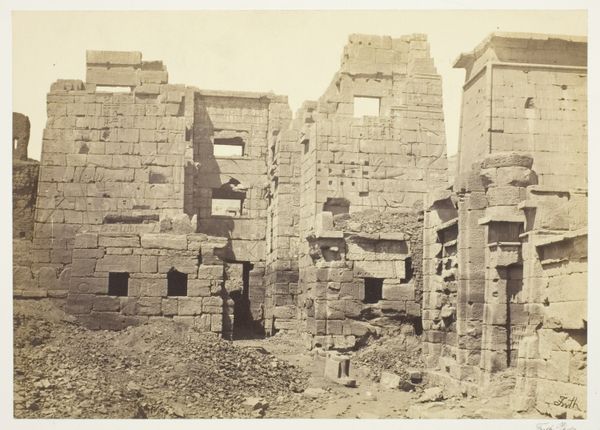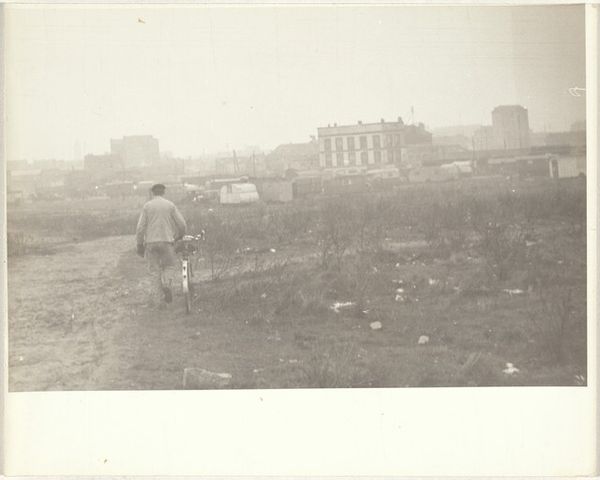
photography
#
black and white photography
#
dutch-golden-age
#
black and white format
#
street-photography
#
photography
#
monochrome photography
#
cityscape
#
monochrome
#
realism
#
monochrome
Dimensions: height 505 mm, width 402 mm, height 400 mm, width 272 mm
Copyright: Rijks Museum: Open Domain
Curator: George Hendrik Breitner’s photography, and in particular this piece, “Nieuwbouw aan de Overtoom in Amsterdam,” offers us a fascinating glimpse into Amsterdam between 1890 and 1910. Editor: It strikes me immediately as stark. The tones of gray give the scene an almost industrial feel, yet there's a strange beauty in the rigid geometry of the building juxtaposed with the everyday figures. Curator: Precisely! Breitner, you see, captured the rapid urbanization of Amsterdam at the turn of the century, a time when the city was experiencing massive social and spatial transformations. The Overtoom, for instance, was undergoing significant development. Editor: And those figures in the foreground, their presence almost feels secondary to the architectural scene. Do they carry some sort of significance or hidden meaning? I find myself pondering who they might be and their connection to this new building under construction. Curator: In Breitner's work, people become a part of the cityscape. He aimed to depict daily life, especially focusing on working-class subjects and urban spaces in transition. Their anonymity is, in a way, a deliberate choice reflecting the anonymity of modern city life itself. This photograph speaks volumes about the lived experiences of people who had to negotiate their existence against the rise of the urban infrastructure of the late 19th Century. Editor: So the symbolism lies not just in the individual figures, but their collective experience within the city. Even the contrast between light and shadow is significant. It enhances the emotional weight, adding layers of history to the story of the street that it shows. Curator: Yes, the realism movement pushed for the democratisation of subject matter. Everyday people in this photograph aren’t some exotic or unique character. In line with realism, the image speaks to universal concepts like economic change, urbanization, and the working class as Breitner captured Amsterdam. Editor: It's thought-provoking. The figures are somewhat elusive in nature, though their stories would inform the world of this photography today. Curator: I agree. Hopefully, the photograph prompts people to re-think what histories matter.
Comments
No comments
Be the first to comment and join the conversation on the ultimate creative platform.



